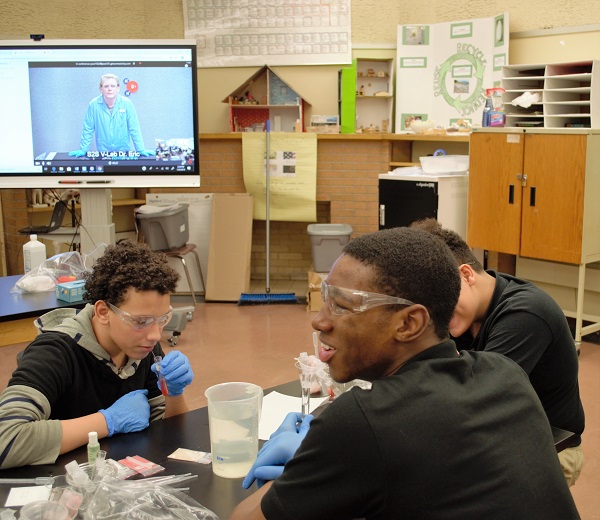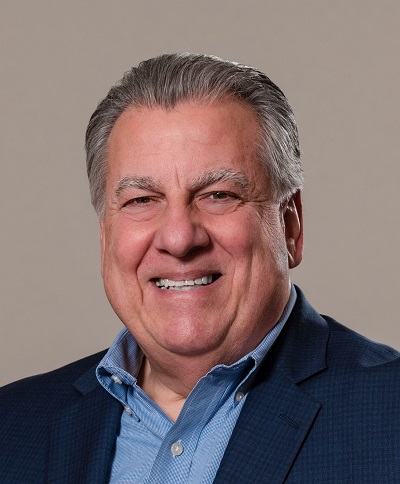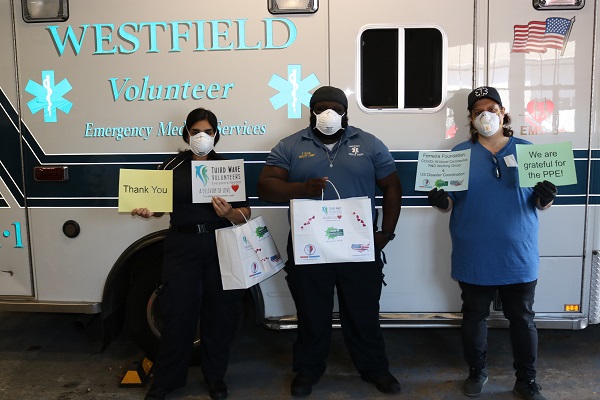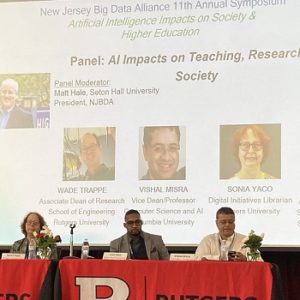Students 2 Science Scales Virtual Science Lab to Reach More New Jersey Students
If you represent a socioeconomically challenged (Title One) school district in New Jersey, Students 2 Science (East Hanover) can help you deliver science instruction to your students — whether they are at school, at home or in a hybrid situation — via a virtual lab armed with a qualified instructor.
That’s the message from Catherine “Kit” Nugent, vice president for external engagement at S2S, and Gary Sarkis, director of operations. The nonprofit has been doing this for several years for Title One school districts in Northern New Jersey, and it’s now ready to connect with Title One school districts statewide.
“Our ‘V-Lab’ program, as we call it, is six years old at this point. And we have metrics to share that are exciting,” Nugent told us. “We focus on Title One school districts. We’re in about 20 percent of Title One districts right now. And what we hope to do — and are ready to do now — is to take the virtual laboratory statewide.” S2S has invested over the last few years in multiple labs and instructors, and now operates labs that can run a total of over 10,000 programs annually.
Qualified Teacher Shortage During Pandemic
This ability is especially important during COVID-19. Even under normal circumstances, there is a high turnover of highly qualified math and science teachers in the urban areas. “With COVID-19, it’s been absolutely devastating. In one district that we work with there were 12 teachers who resigned over the summer,” she stated.
The S2S V-Lab was created in partnership with Connectivity, Inc. (Lauderhill, Fla.), and in collaboration with the American Chemical Society, Nugent noted. It offers instruction in biology, biotechnology, chemistry, environmental science, earth science, engineering, physics and more. The content can be provided in many different languages to accommodate districts with large immigrant populations.
“Districts are scrambling for rigorous content to provide,” Nugent said, and the S2S team has been creating this. “Most of our instructors are Ph.D.s or content experts that come from the corporate sector. Gary’s from General Electric and others are from Merck and Schering-Plough and other STEM-based corporations.” Recognizing this need even before the pandemic, the organization set a goal of raising $3.5 million to expand the V-Lab program in socioeconomically disadvantaged communities.
The V-Lab can be deployed in several ways, Sarkis said. In all cases, there is an instructor and possibly a co-instructor available at the V-Lab to do experiments and handle questions. If a school is following a hybrid model or working remotely, “our instructors will be talking directly to the student in the home.”
If the instructor is doing a chemical reaction, students will see it being done live, and they can ask the instructor questions directly via a chat window or through their teacher at school. The chat window can be a really engaging part of the process because the instructor or the classroom teacher can ask the students questions. “We can put up a poll question and let them respond. And when they have questions, the answers can be sent through links that S2S sends,” Sarkis explained.
How S2S Handles Hybrid School Schedules
Coordinating hybrid school situations can be difficult. This is an arrangement in which some students are in the classroom, while others are at home.
With hybrid learning, some students will join the session directly, and some will be watching through a hookup to their classroom teacher. “We are doing a live, engaging experiment, where we are basically turning out the ideas and asking the students questions,” and the whole package tends to create student engagement, Sarkis said.
“We’ve been working with school districts since March. We’ve been on the phone with the superintendents of science, curriculum directors and teachers, monitoring where they are and what they need. So, this has been a very intensive process,” Nugent noted.
“Gary and his team have come up with a way for students, while they’re at home, to participate with their classmates, who have the scientists in the classroom,” Nugent said. “The students at home are working as lab observation technicians. They’re writing their own reports. They’re anticipating, they’re asking questions, they’re part of the team. And when we flip and split, some students will have the in-classroom experience. And then when it is their turn to come into the classroom, the next time they’ll be the hands-on technicians, and their colleagues will be the observation folks.”
Connecting Underserved Students to STEM Careers
A big part of the S2S mission is to connect underserved students to STEM careers. “We believe that we are bringing opportunity and access to students who otherwise would not have this connection to what these careers are, or an understanding of the skills needed,” said Nugent. Educators really love our program. It’s a great complement to what districts are teaching and aligns well to the pathways that students want to follow towards 21st-century careers.”
The organization is looking for sponsors to help districts afford this kind of STEM intervention. For example, Nugent noted that S2S recently got a call from a pharmaceutical company that wants to address issues relating to racial equality and social justice. “They are looking at the V-Lab as an opportunity to do that. They are interested in some districts in Central New Jersey, as well as some in the southern part of the state, such as Trenton and Camden, for instance.”
New Jersey colleges and universities also work with S2S. Volunteers not only help students in these STEM areas, they also tell them what college life is like and how exciting it is to be part of that, “so that those younger students can see the path to these universities, and then go to the next stage of their journey if they wish to go to college,” Nugent said.




